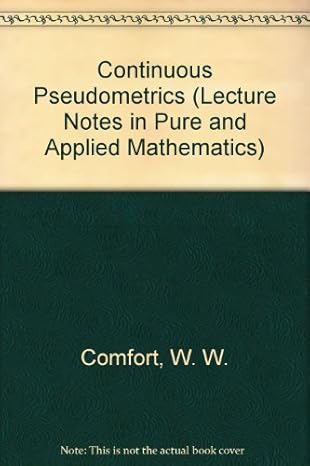Question
Subject: Stochastic Process Chapter: Markov Chain A Markov chain is said to be a tree process if (i) ? P i j ? > 0
Subject: Stochastic Process
Chapter: Markov Chain
A Markov chain is said to be a tree process if
(i) ?Pij?>0? whenever ?Pji?>0? ,
(ii) for every pair of states ?i? and ?j?, ?i??=j? , there is a unique sequence of distinct states ?i=i0?,i1?,...,in?1?,in?=j? such that
?Pik?,ik+1??>0,k=0,1,...,n?1?
In other words, a Markov chain is a tree process if for every pair of distinct states i and j there is a unique way for the process to go from i to j without reentering a state (and this path is the reverse of the unique path from j to i).
Question: Argue that an ergodic tree process is time reversible.
(According to my teaching assistant, the hint is below: (image attached))

Step by Step Solution
There are 3 Steps involved in it
Step: 1

Get Instant Access to Expert-Tailored Solutions
See step-by-step solutions with expert insights and AI powered tools for academic success
Step: 2

Step: 3

Ace Your Homework with AI
Get the answers you need in no time with our AI-driven, step-by-step assistance
Get Started


